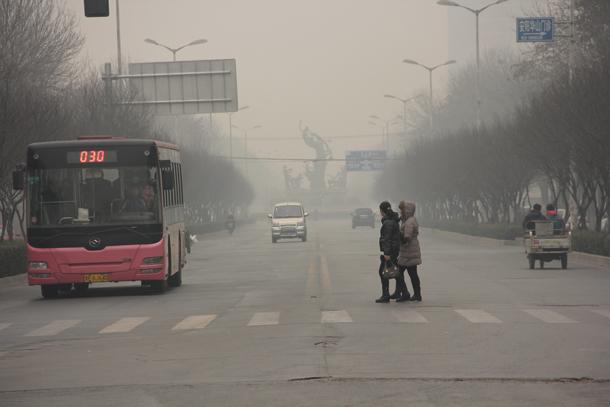Air pollution is a silent killer, even when it meets EPA standards
PM 2.5 air pollution, also known as ambient particulate matter (or, soot), kills thousands of people in the US and worldwide. In the US, most PM 2.5 comes from vehicles. In other countries, like China and India, coal-fired power plants and factories produce a large amount of these unhealthy particulates.
Evidence from a new study indicates that supposedly safe levels of air pollution can actually be deadly.
The research, published in a Journal of the American Medical Association, links the deaths of 200,000 military veterans to long-term exposure to ultra-fine particle pollution at levels below current Environmental Protection Agency acceptable limits.
Ultra-fine particulate air pollution, known as PM 2.5, is so small that it can work its way through the lungs into the bloodstream into major organs, including the heart, brain and kidneys. Almost everyone inhales these pollutants every day, mostly from the tailpipes of motor vehicles and the soot created by coal-burning power plants.
Related: Why Mexico City’s bad air can’t be ignored — or easily fixed
EPA recommends that annual exposure to PM 2.5 not exceed 12 micrograms per meter cubed, a measure of the concentration of PM 2.5 particles in the air. The new study finds that “99.0% of the burden of death due to non-accidental causes were associated with PM 2.5 levels below the current EPA guidelines.”
In addition, while previous studies had linked PM 2.5 pollution to a wide variety of maladies, ranging from heart attacks and strokes to asthma and dementia, the new research found associations with a total of nine disorders, including dementia, hypertension and kidney disease.
Related: Environmental emergency declared in Mexico’s smog-choked capital
Epidemiologists compared the records of 4.5 million veterans who died over the recent decade to levels of ultra-fine particulates where they lived. Exposure levels varied across the study and the burden of death is not equally distributed geographically, racially or socioeconomically, said Ziyad al-Aly, a nephrologist and epidemiologist at Washington University School of Medicine in St. Louis, and a co-author of the study.
Areas of the Midwest and parts of the South are disproportionately affected and, even more concerning, black veterans were more likely to die from PM 2.5 pollution than their white counterparts.
“This was really eye-opening,” Aly said. “At the same exact level of PM 2.5 — let’s say, 10 micrograms per meter cubed — black veterans exhibited higher risk. When we adjusted or controlled or held constant socioeconomic deprivation, race still exhibited what we call statistically an interaction. What that really means is that black people in our cohort were more vulnerable to the same level of PM 2.5 than white people, irrespective of their socioeconomic background.”
Related: Smothered by smog, activists are urging Poland to reconsider coal
That could mean a lot of things, Aly said. One potential explanation is that minorities may have less access to health care or preventive measures or other means to mitigate the adverse consequences of exposure to pollution. Black people in America also tend to live in areas with high levels of pollution, he said.
“So, not only do they live in areas that have a higher level of PM 2.5, [but] they’re also more sensitive to it, or more vulnerable to it,” Aly said. “That’s really almost like the odds are stacked significantly against racial minorities.”
In the US, the major cause of PM 2.5 is motor vehicles. In other parts of the world, industrial emissions, including coal-burning power plants, are the main culprit. In Southeast Asia and India, biomass burning — when farmers burn the remnants of their fields to clear them of agricultural byproduct — also produces a huge amount of PM 2.5.
Aly said the results of the study can be read in two ways. Since most of the deaths they found occurred at exposures below EPA’s recommended level of 12, the study confirms the “enormous success of the EPA and the Clean Air Act in reducing PM 2.5 in the United States.”
“Most of the PM 2.5 in the US is now below 12, so most of the health consequences that you see are below 12,” he said.
On the other hand, he said, since most of the deaths are now below 12, perhaps EPA should consider a lower threshold that might reduce the health consequences of pollution exposure.
On an individual level, “there’s not a whole lot a person can do other than really participate in the discussion,” Aly said. “How do we as a society try to work together to come up with ways of curbing air pollution to the extent possible to reduce the health impact of air pollution, while at the same time encouraging economic productivity?”
This article is based on an interview with Steve Curwood that aired on Living on Earth from PRX.
